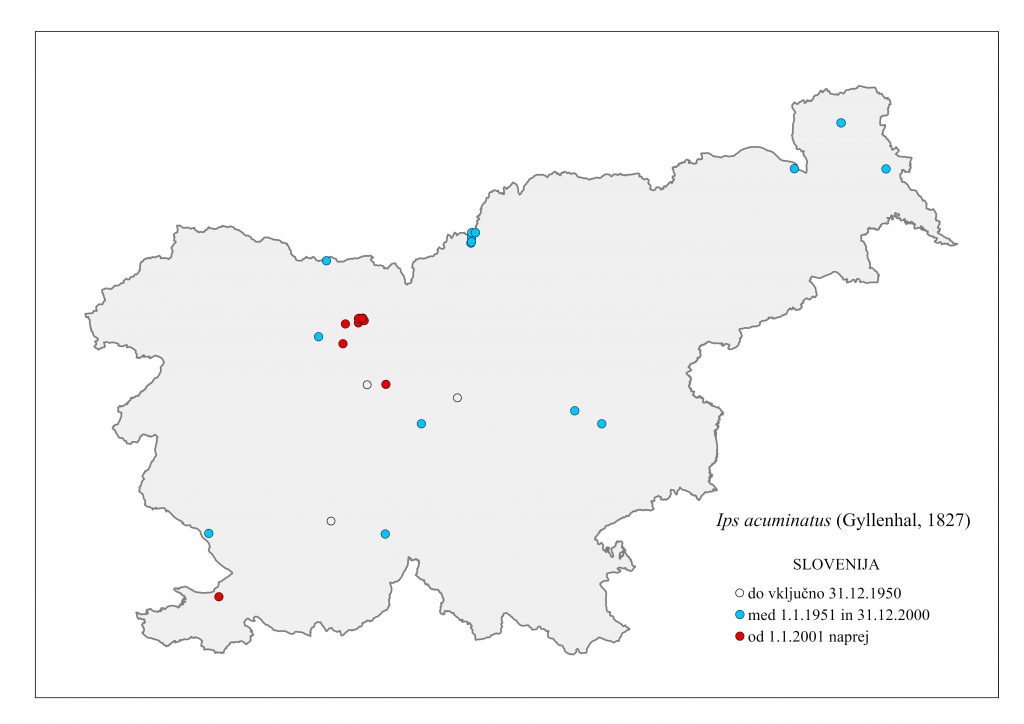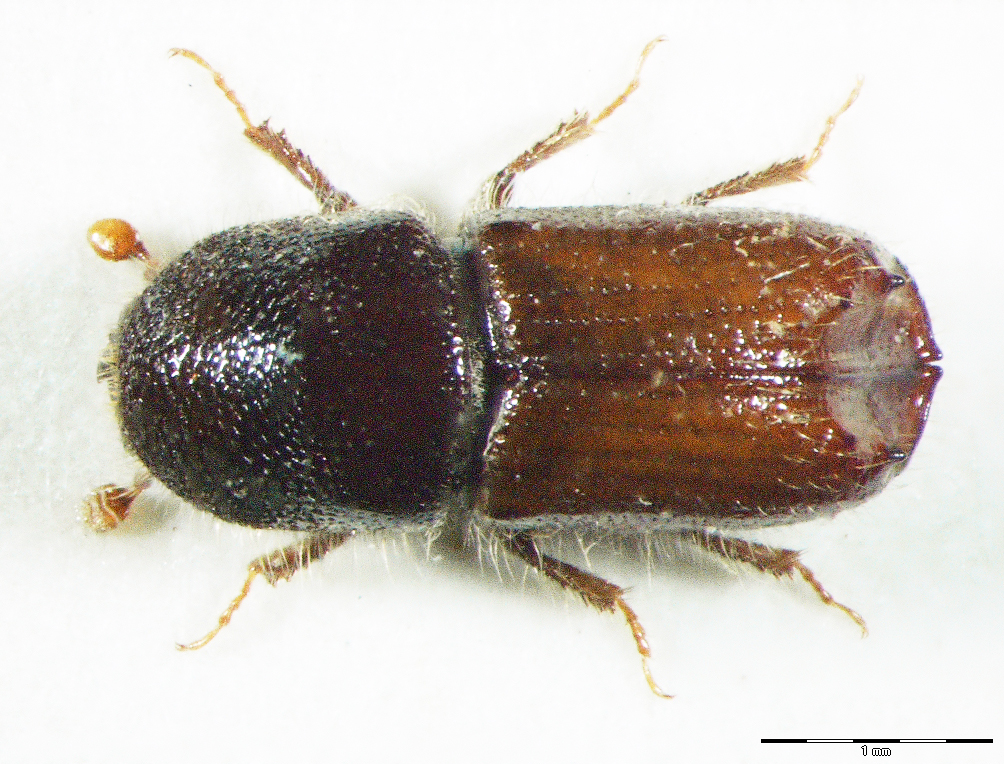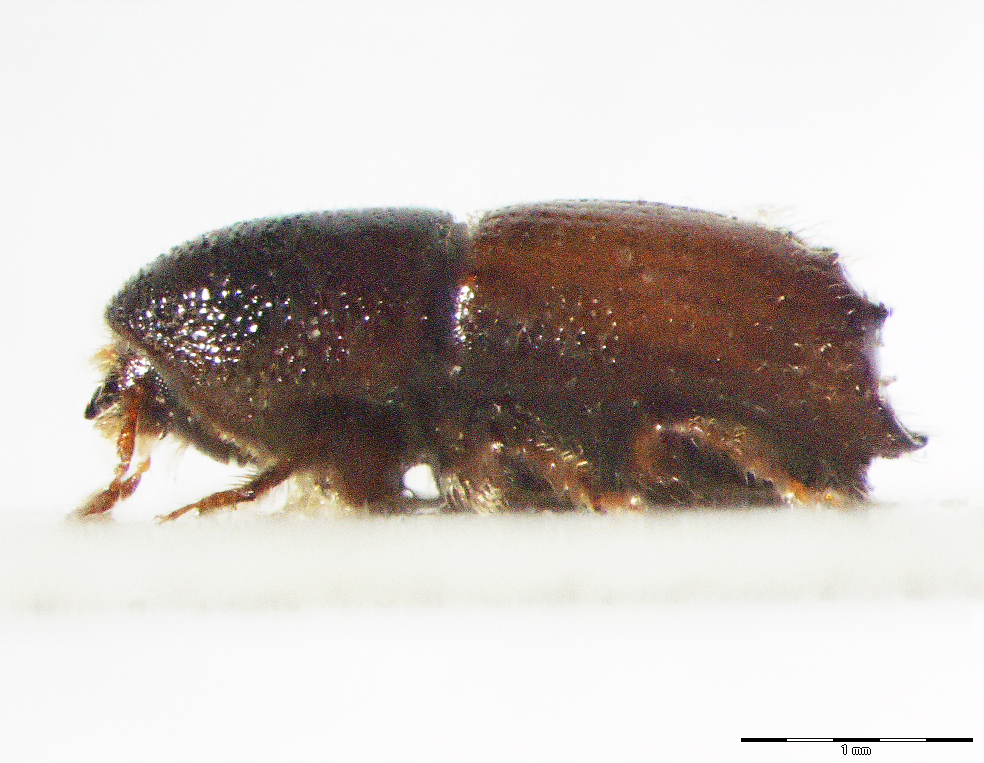28.01. Ips acuminatus (Gyllenhal, 1827)
Presence
E: AU BE BH BU BY CR CT CZ DE EN FI FR GB GE GR HU IR IT LA LT LU MC MD NL NR NT PL RO SK SL SP ST SV SZ UK YU
A: ES FE FUJ GAN HEB HEI HEN HUN JA JIL KZ LIA MG NC NMO QIN SC SCH SHA SHN SHX SY TAI TR WS XIN YUN
ORR
Figure 112: Ips acuminatus, dorsal, lateral (Photo: Maja Jurc)
Older catalogs and keys – citations of name
Grüne 1979: Ips acuminatus (Gyllenhal, 1827); Freude, Harde, Lohse 1981: Ips acuminatus Gyllenhal; Titovšek 1988: Ips acuminatus (Gyllenhal); Pfeffer & Knížek 1993: I. acuminatus (Gyllenhal, 1827); Pfeffer 1995: I. acuminatus (Gyllenhal, 1827); Vega & Hofstetter 2015.

Figure 113: Ips acuminatus, distribution map according to historical and recent data
Ecology and presence in Slovenia
The species is present in Europe, Asia Minor, Crimea, Caucasus, Siberia, Korea, and Japan. Individual records are found throughout most of Slovenia, but the species is often overlooked because it is a canopy dweller (Figure 113). Hosts include Pinus sylvestris, P. nigra, P. mugo and P. heldreichi, occasionally Picea abies, P. orientalis, P. obovata, Abies nordmanniana, Larix decidua and Juniperus communis. The species has only been recorded in Slovenia on Pinus sylvestris and P. nigra, and on Picea abies. Adult length is 2.2-3.9 mm. I. acuminatus is characterised by sexual dimorphism: males have three denticles on each elytral margin, the third being the largest and with two apices, while in females the third denticle is smaller and with one apex (Figure 112). A polygamous species, it develops 1-2 generations per year, swarming in May (April in southern ranges) and August. The tunnel system is distinctly longitudinally star-shaped, with 3-5 maternal and short larval chambers. They attack the thin bark of branches or tops. In southern Europe, its economic importance is increasing due to its frequent occurrence in forests with P. sylvestris. The species is secondary but may become primary in The species is secondary, with an increased population in pine forests it can become primary. Pheromones: Ipsdienol, Ipsenol, cis-Verbenol (Vité et al., 1974, Vité 1978).


